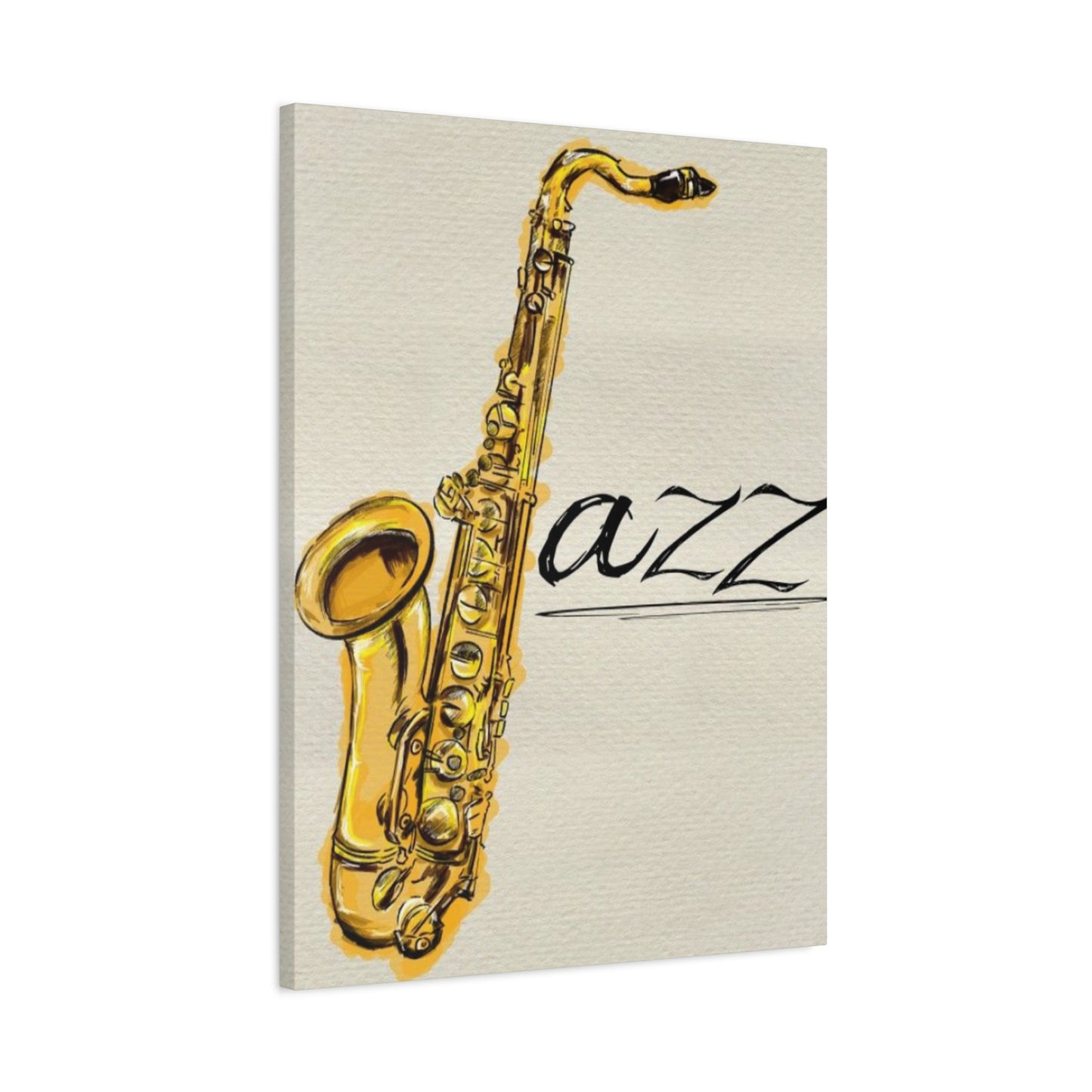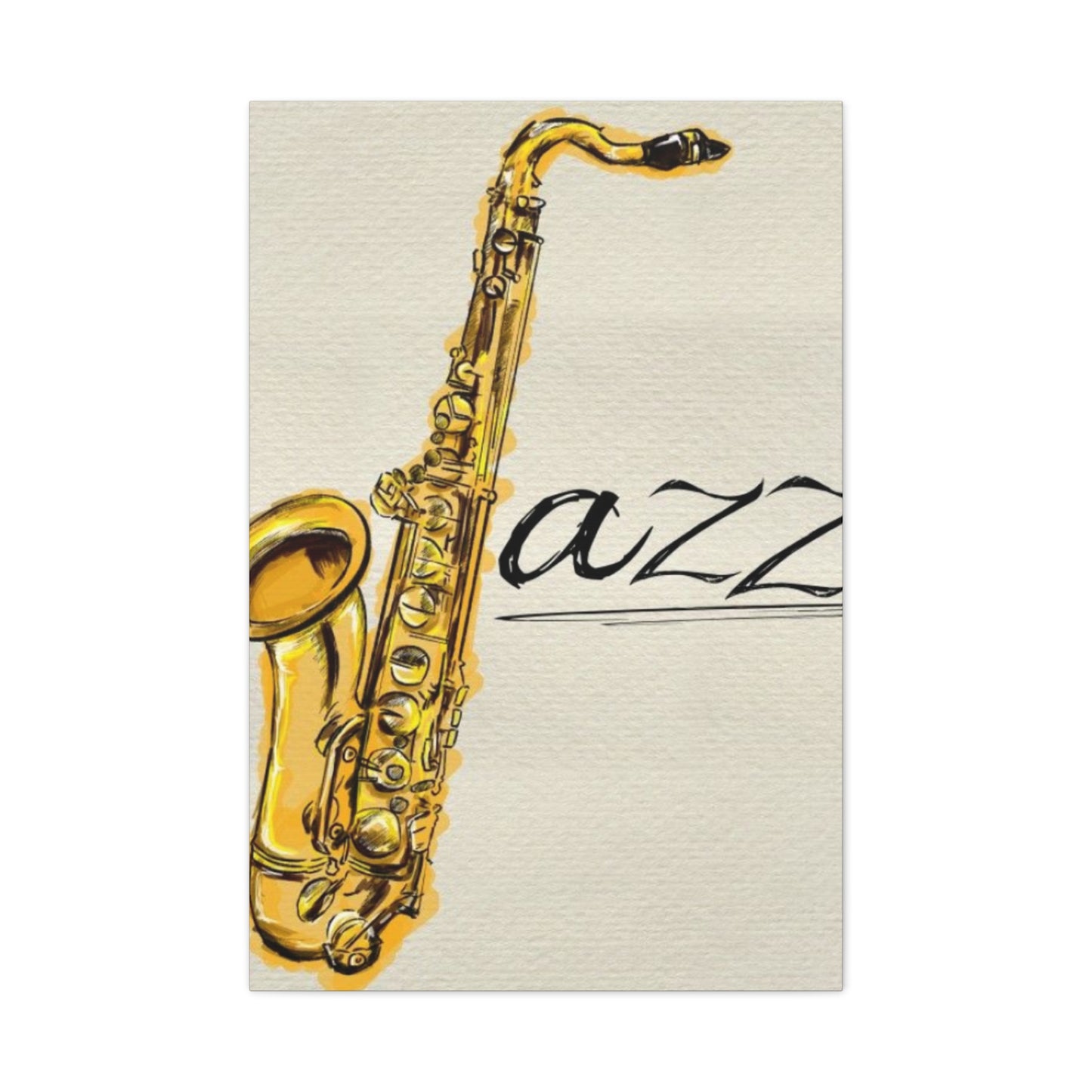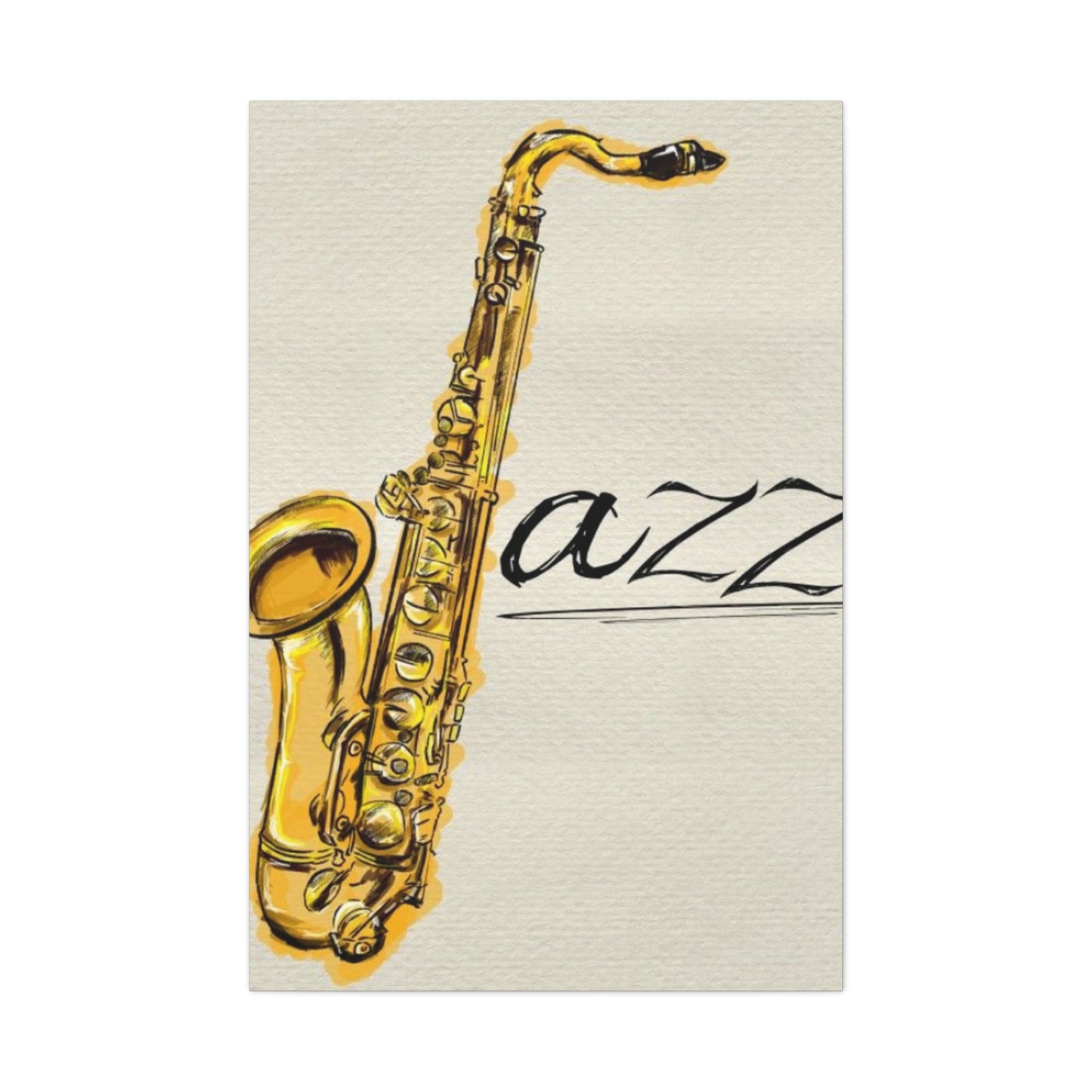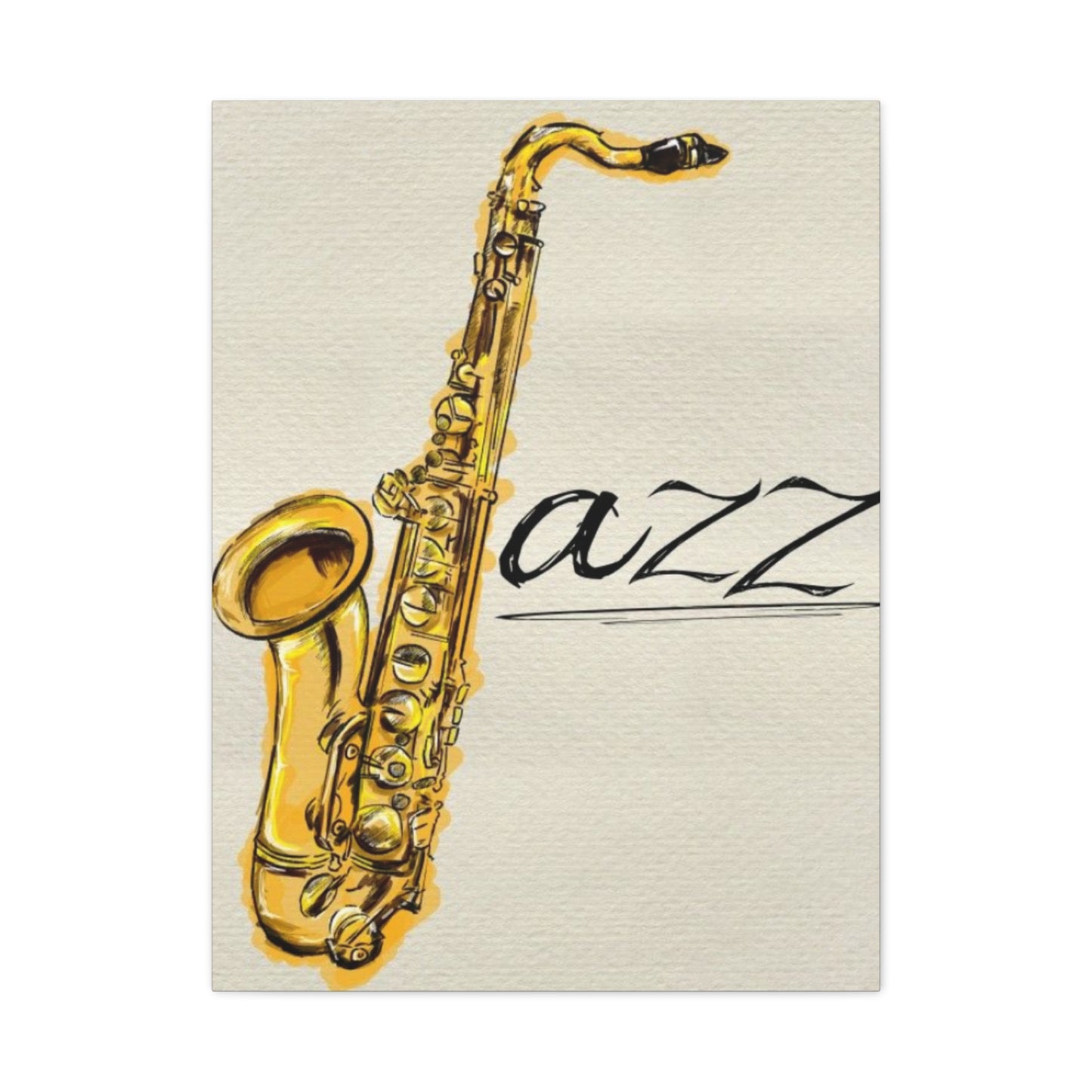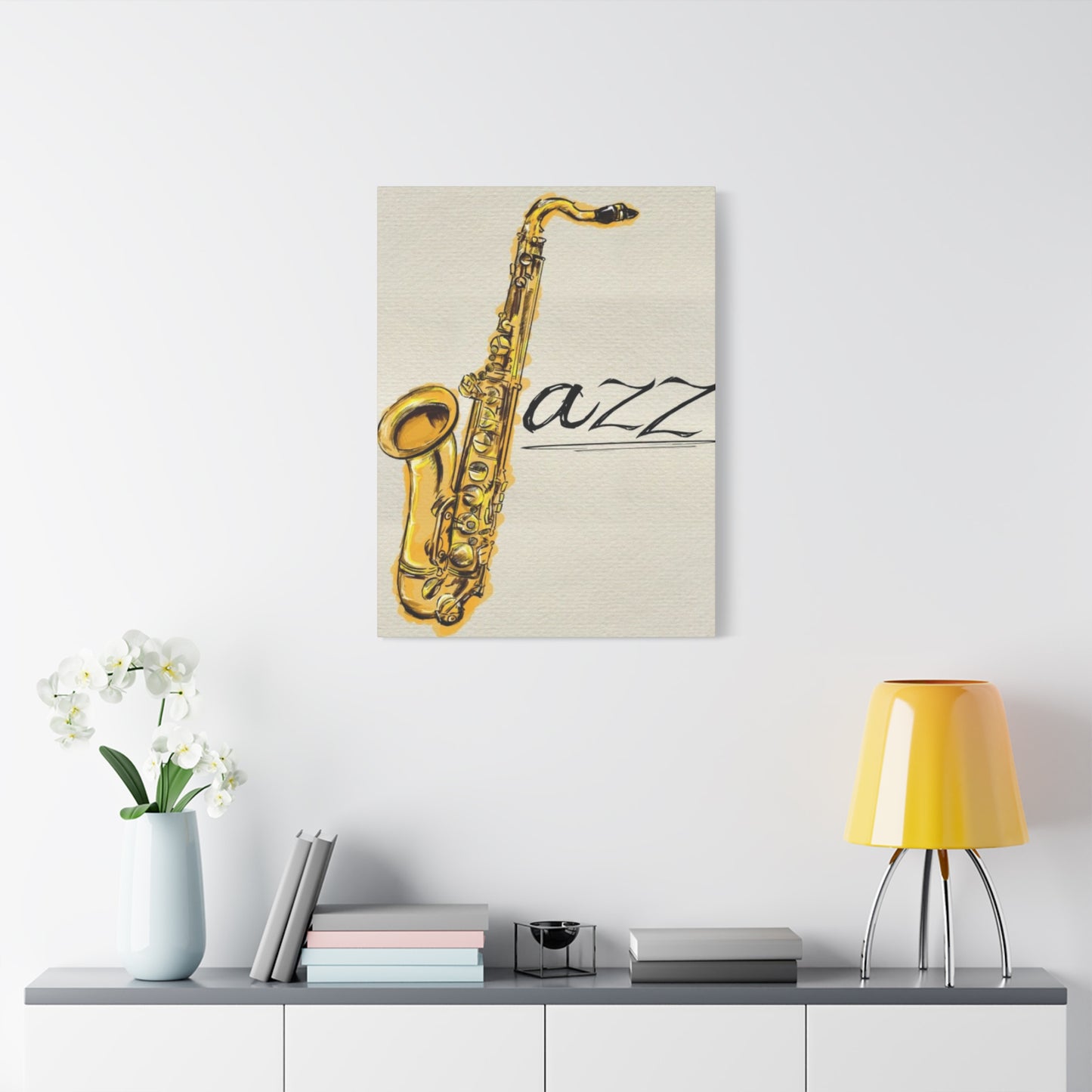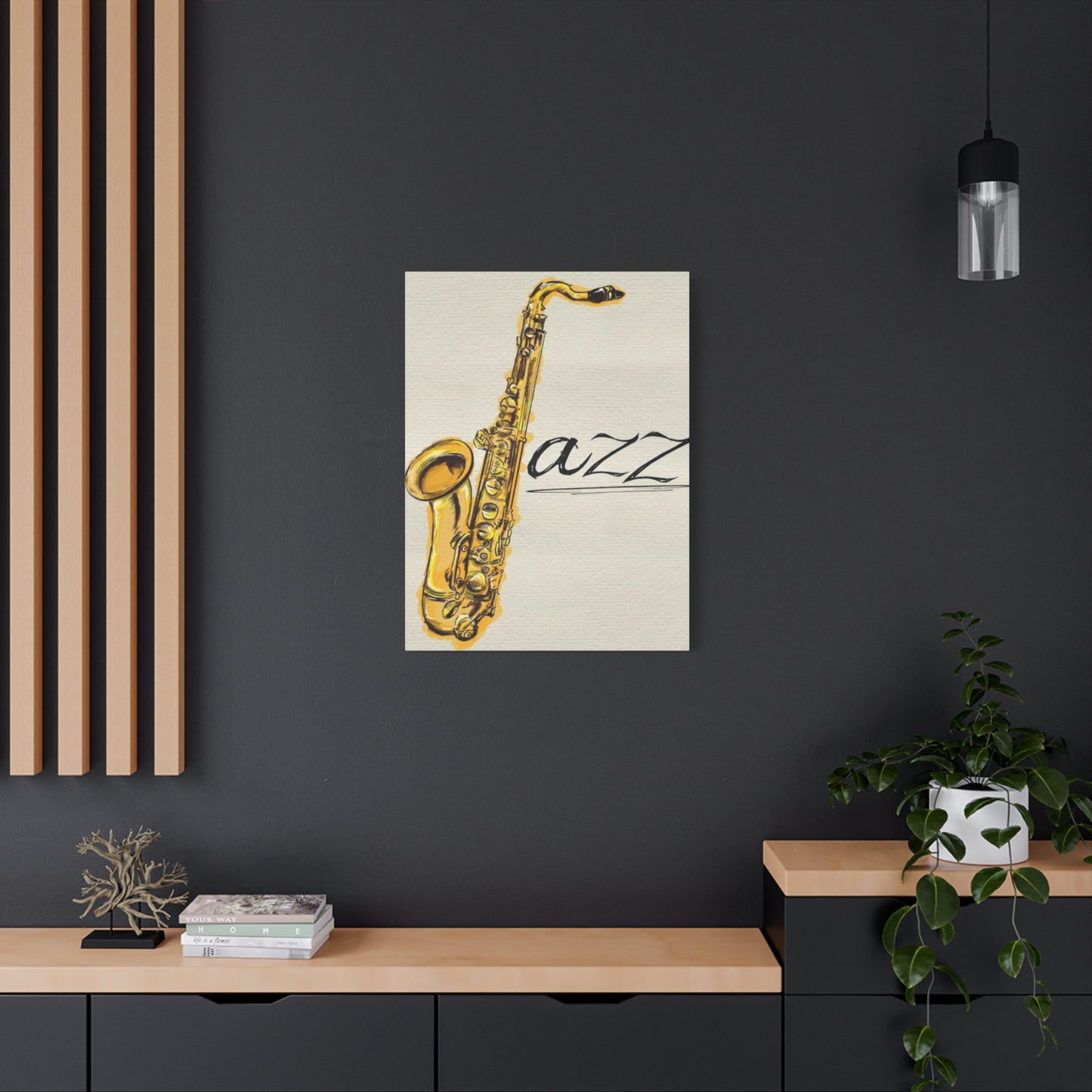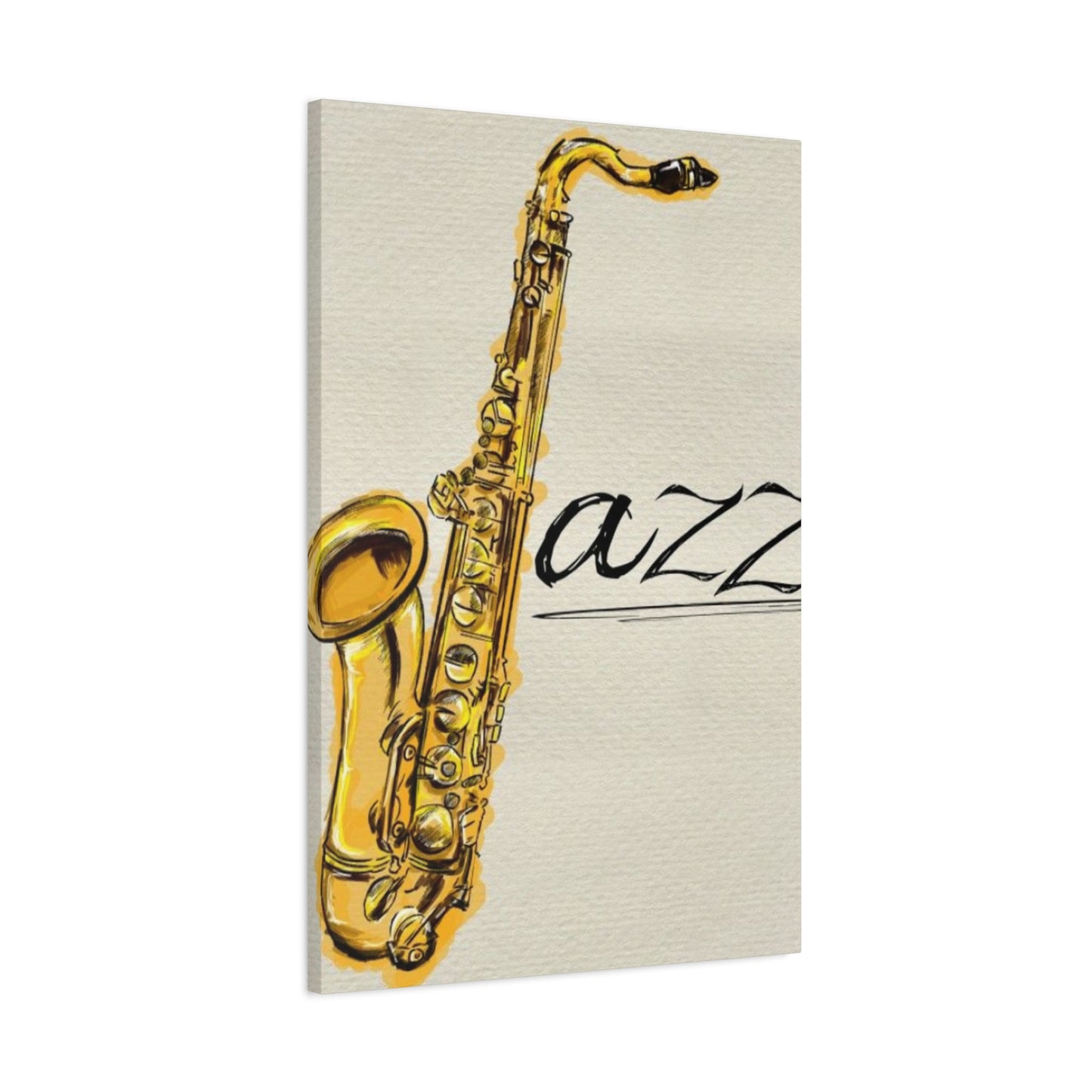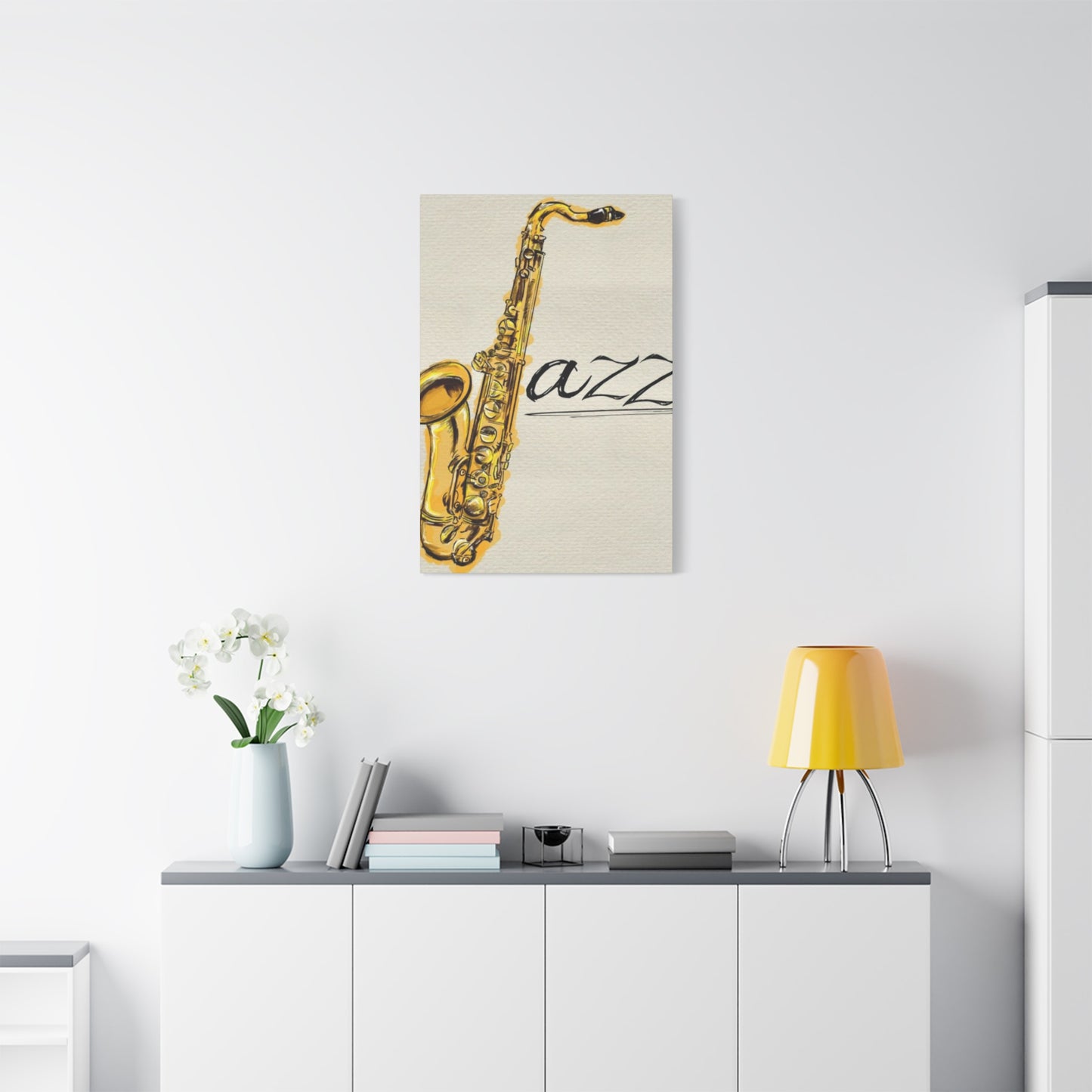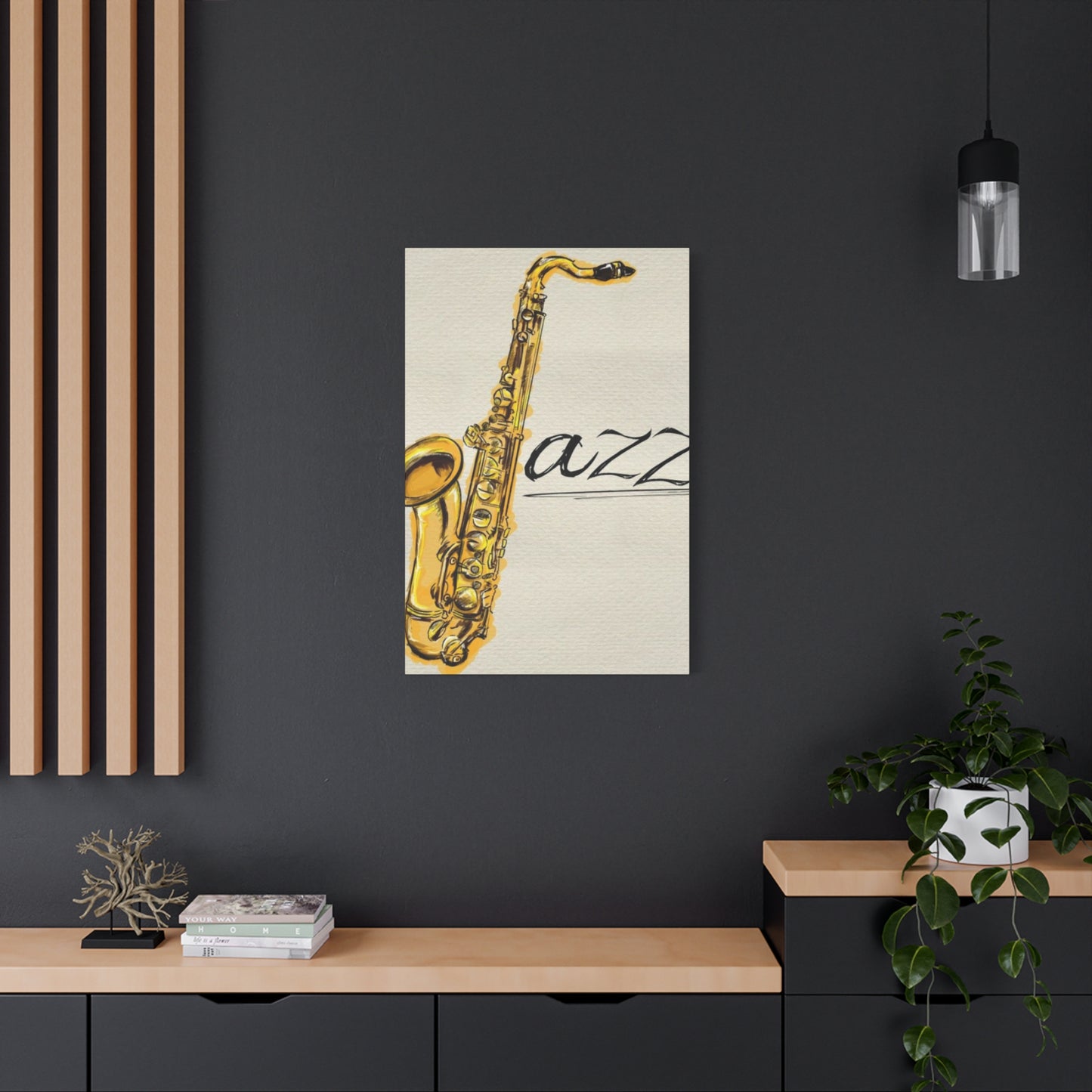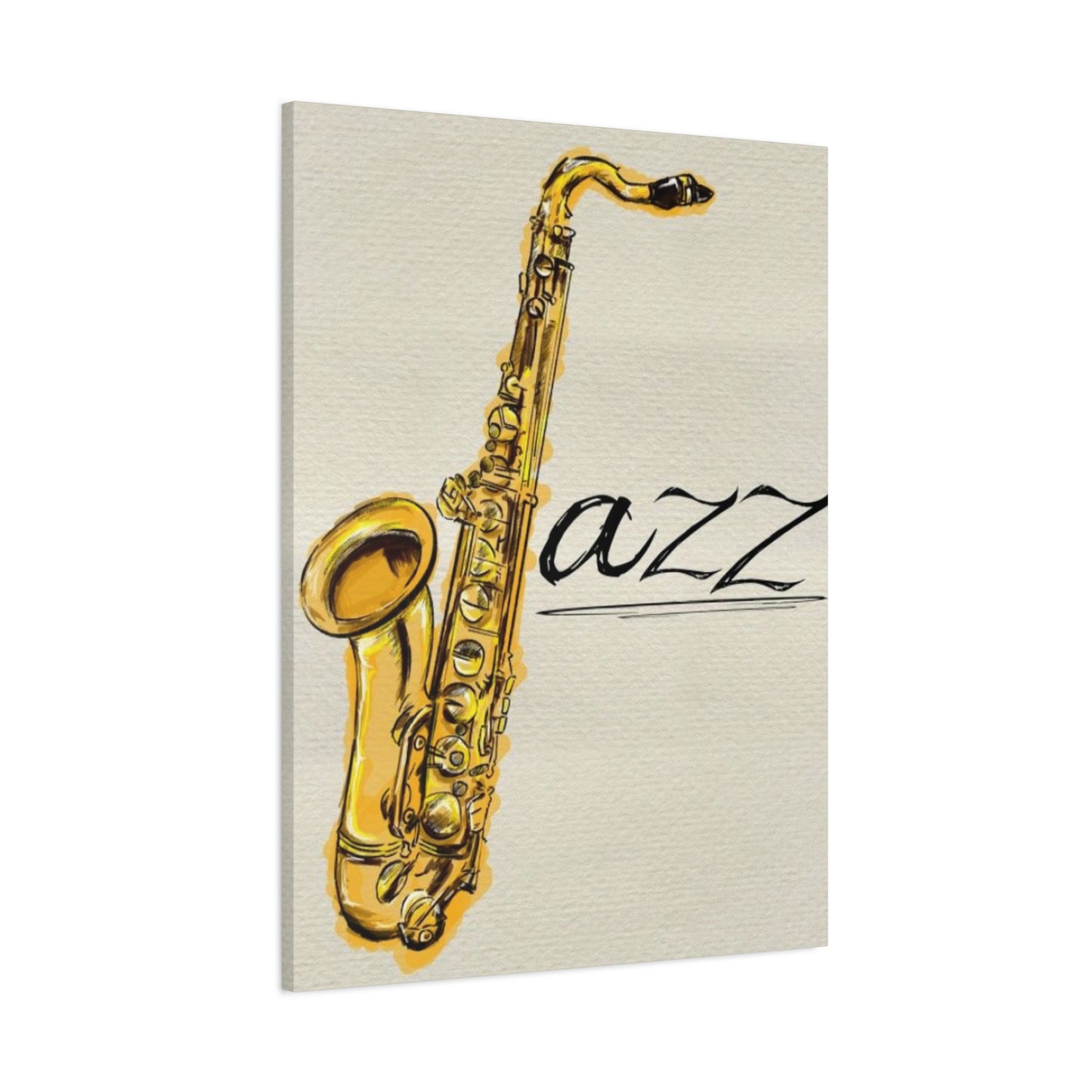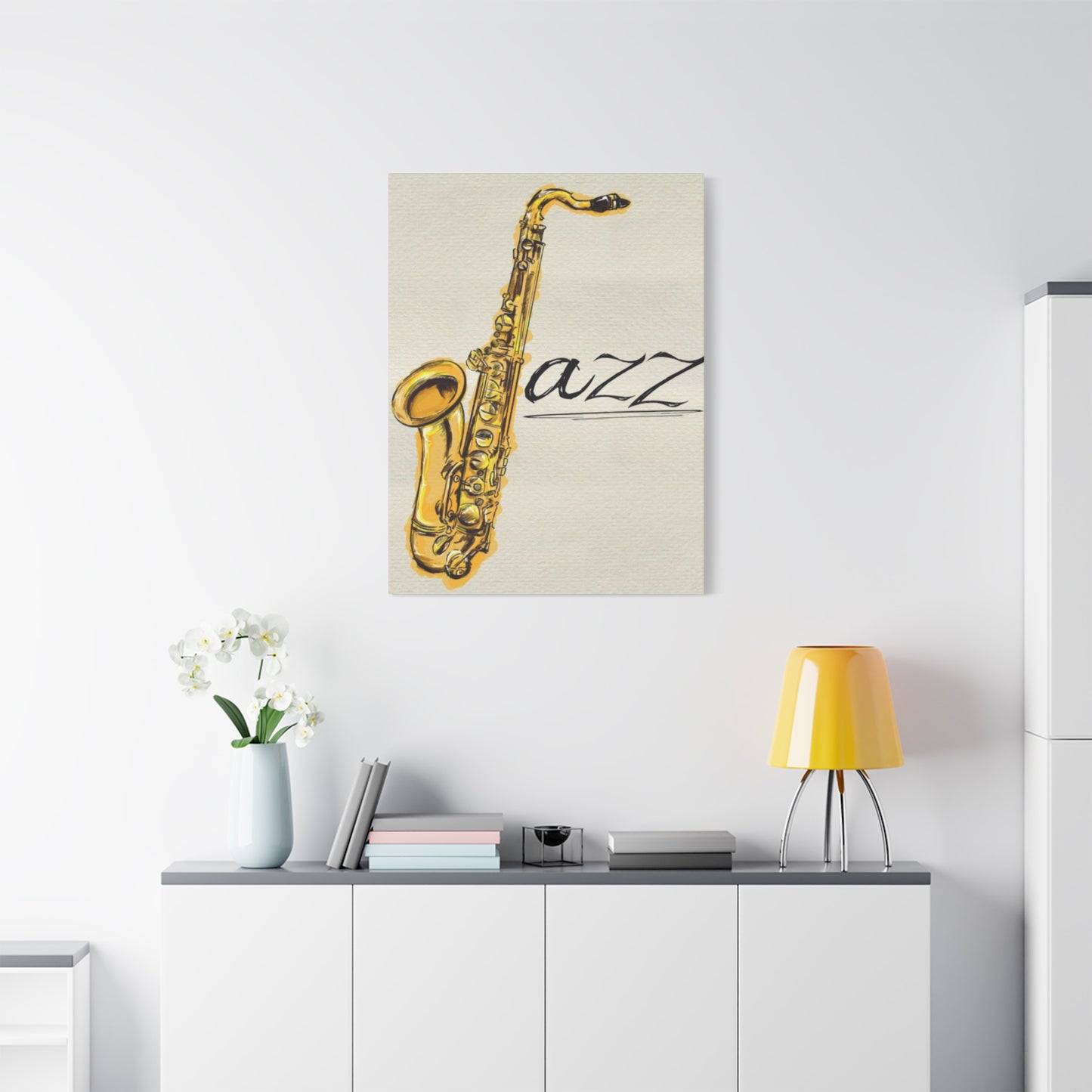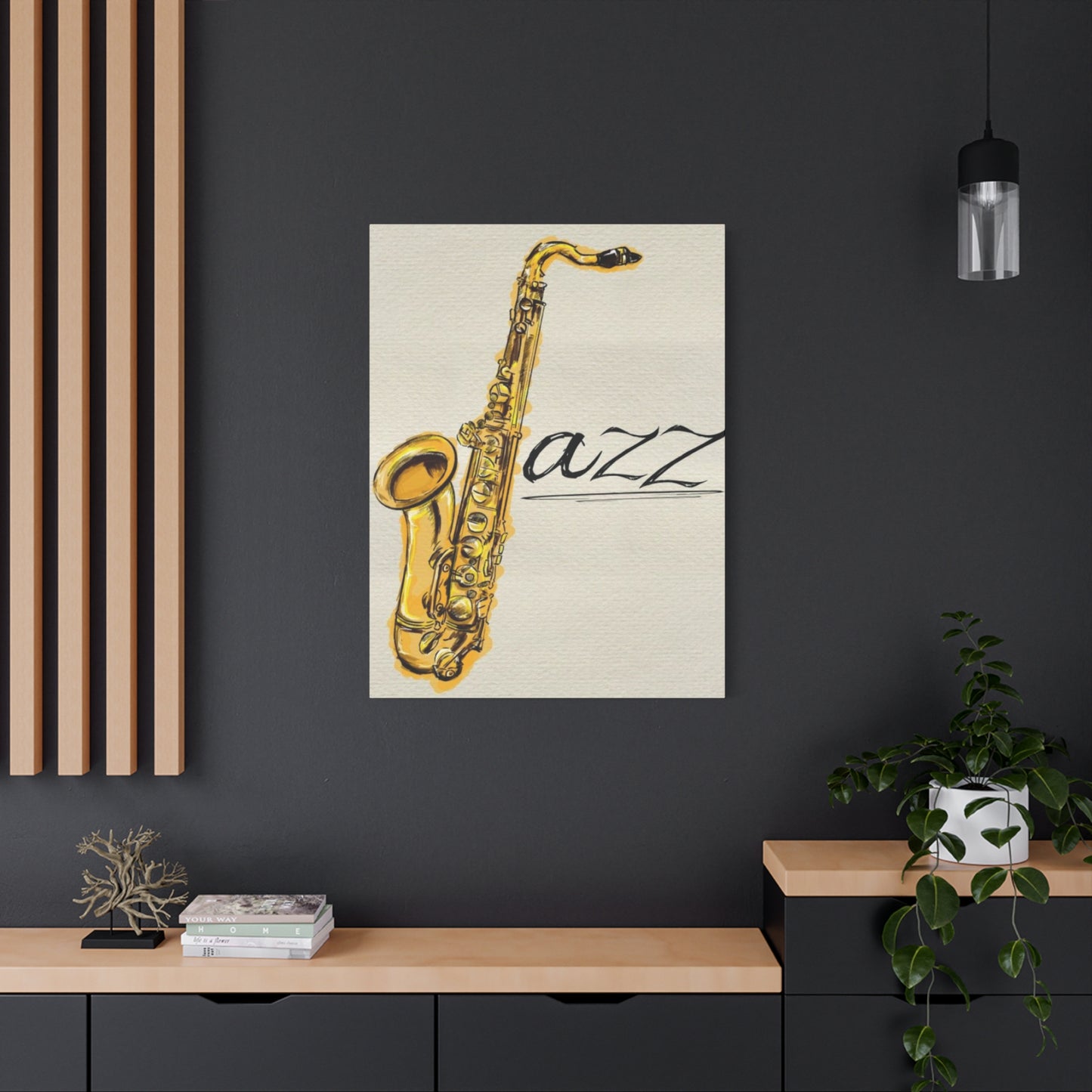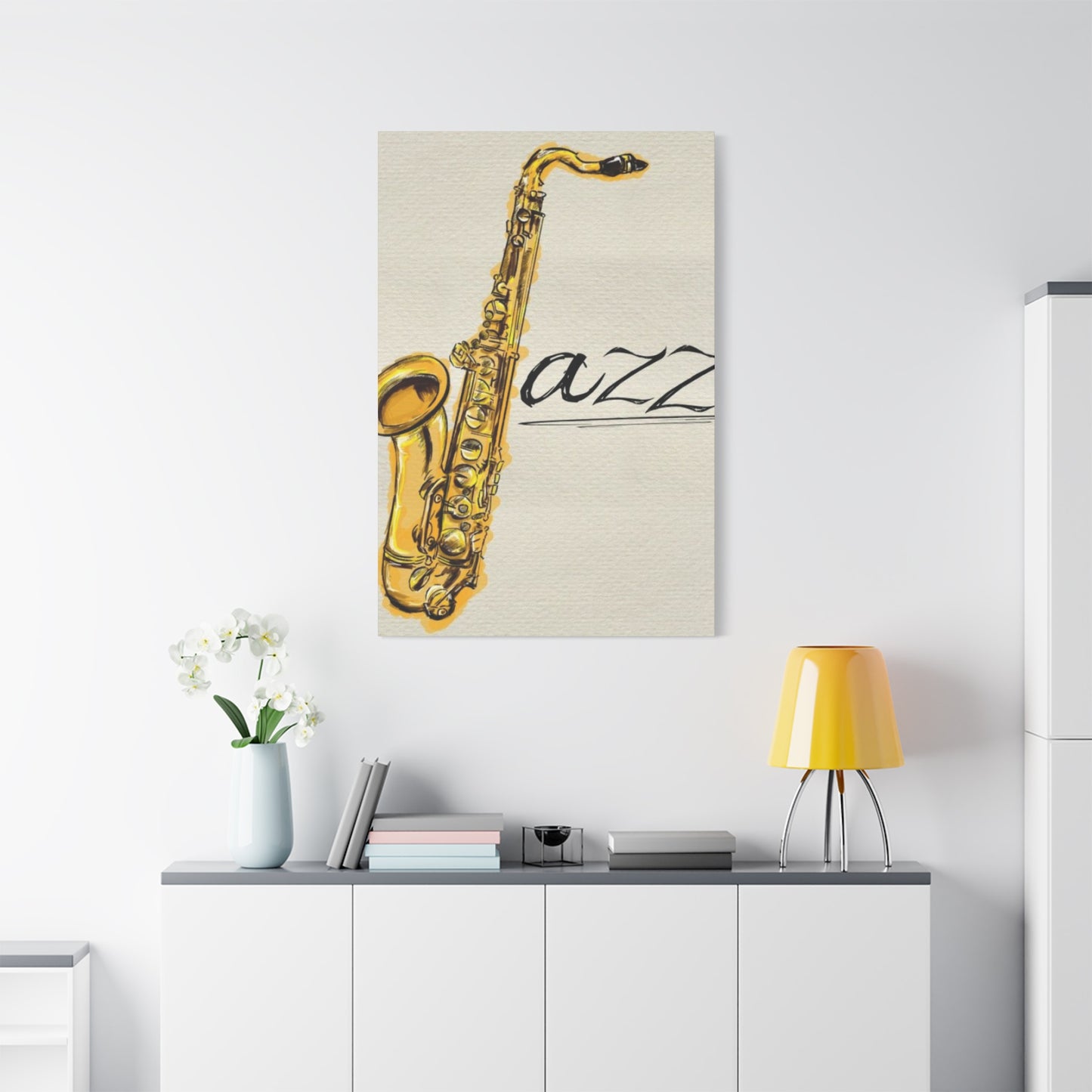Saxophone Jazz Wall Art: Elevating Your Interior Design with Musical Masterpieces
The fusion of music and visual art creates a powerful aesthetic statement that resonates with art enthusiasts and music lovers alike. Saxophone imagery combined with jazz-inspired artwork on canvas has emerged as one of the most sought-after decorative elements for modern living spaces. This comprehensive exploration delves into the world of musical instrument artwork, specifically focusing on how saxophone representations and jazz-themed visual pieces can revolutionize your home or office environment.
The Cultural Significance of Saxophone Imagery in Contemporary Art
The saxophone holds a unique position in the pantheon of musical instruments, embodying sophistication, emotion, and cultural heritage. Since its invention in the 1840s by Adolphe Sax, this brass instrument has become synonymous with jazz music and represents freedom of expression in artistic communities worldwide. When translated into visual art form, saxophone imagery captures the essence of improvisation, creativity, and the soulful nature of musical performance.
Artists throughout generations have been captivated by the saxophone's elegant curves and the passionate way musicians interact with this instrument. The visual representation of a saxophone player lost in melody creates an immediate emotional connection with viewers, evoking feelings of nostalgia, sophistication, and cultural awareness. These artistic interpretations serve not merely as decorative pieces but as cultural artifacts that celebrate the rich history of jazz music and its profound impact on society.
The saxophone in visual art represents more than just an instrument; it symbolizes an entire movement of artistic rebellion and innovation. During the Harlem Renaissance and subsequent jazz age periods, the saxophone became an icon of cultural revolution, representing the voice of marginalized communities finding expression through music. Contemporary artists continue this tradition by creating visual representations that honor this legacy while incorporating modern artistic techniques and styles.
Canvas prints featuring saxophone imagery bridge the gap between auditory and visual experiences, allowing people to bring the energy and emotion of live jazz performance into their personal spaces. These artworks often capture musicians in moments of intense concentration or emotional release, freezing in time the dynamic relationship between artist and instrument. The resulting images possess a timeless quality that transcends temporary design trends, making them valuable additions to any art collection.
Jazz Musical Heritage Reflected Through Visual Art
Jazz music represents one of America's most significant cultural contributions to the world, and visual art celebrating this genre serves as a testament to its enduring influence. The visual language of jazz art incorporates elements that reflect the music's characteristics: improvisation, rhythm, syncopation, and emotional depth. Artists working in this genre often employ bold color palettes, dynamic compositions, and expressive techniques that mirror the spontaneity and energy of jazz performance.
The historical context of jazz music provides rich material for artistic interpretation. From the smoky clubs of New Orleans to the sophisticated venues of New York City, jazz has always been associated with specific atmospheres and cultural moments. Artists capturing saxophone players and jazz scenes on canvas often incorporate these environmental elements, creating pieces that transport viewers to specific times and places in musical history.
Visual representations of jazz musicians often focus on the performative aspects of the music, capturing the physical intensity and emotional investment required to create compelling performances. The bent posture of a saxophone player, the concentration visible in their facial expressions, and the intimate relationship between musician and instrument all provide powerful visual elements that translate beautifully to canvas format. These images celebrate not just the music itself but the human dedication and passion required to create it.
Contemporary artists continue to find new ways to represent jazz heritage through innovative techniques and styles. Some artists work in realistic styles that capture every detail of instruments and performers, while others embrace abstract approaches that use color, shape, and texture to convey the essence of jazz music without literal representation. This diversity of artistic approaches ensures that jazz-inspired artwork remains relevant and appealing to audiences with varying aesthetic preferences.
Decorating Strategies for Musical Themed Interior Spaces
Incorporating saxophone and jazz-themed canvas prints into your living or working environment requires thoughtful consideration of placement, scale, and relationship to existing design elements. These artworks possess strong visual presence and cultural associations that can either enhance or clash with surrounding décor depending on how they are displayed. Successful integration of musical artwork creates cohesive spaces that reflect personal interests while maintaining aesthetic harmony.
Living room environments benefit tremendously from the addition of sophisticated jazz-themed artwork. The living room typically serves as the primary gathering space in homes, where residents entertain guests and spend leisure time. A large-scale canvas print featuring a saxophone player or jazz ensemble can serve as the room's focal point, establishing the aesthetic tone for the entire space. When positioning such artwork, consider sightlines from seating areas and ensure the piece occupies a prominent position where it can be appreciated from multiple angles.
Home office spaces gain character and inspiration from the presence of musical artwork. The association between jazz music and creativity, innovation, and intellectual achievement makes saxophone imagery particularly appropriate for work environments. A well-chosen piece can serve as a source of motivation during challenging projects, while also communicating professionalism and cultural sophistication to clients or colleagues participating in video conferences. Consider placing artwork at eye level when seated, ensuring it remains visible but not distracting during work activities.
Bedroom settings can incorporate more intimate, contemplative saxophone artwork that promotes relaxation and reflection. Softer color palettes and quieter compositions work well in sleeping spaces, where the goal is creating calm, restorative atmospheres. A canvas print featuring a solitary musician or close-up saxophone details can add personality to bedroom walls without overwhelming the space with excessive visual stimulation. Position artwork opposite the bed or on accent walls where it can be appreciated without dominating the room's peaceful atmosphere.
Entertainment areas, including home theaters, music rooms, and bar spaces, naturally accommodate jazz-themed artwork as part of their overall design concept. These spaces specifically dedicated to leisure and cultural enjoyment provide ideal contexts for bold, dynamic musical imagery. Consider creating gallery walls that combine multiple pieces of varying sizes, or invest in a single dramatic statement piece that captures the energy and excitement of live performance. The key is ensuring the artwork enhances the space's purpose of facilitating enjoyment and entertainment.
Commercial environments such as restaurants, hotels, and corporate offices increasingly recognize the value of sophisticated artwork in creating memorable spaces. Jazz-themed canvas prints work exceptionally well in hospitality settings, where they contribute to ambiance while suggesting cultural refinement. When selecting artwork for commercial spaces, consider the messages and associations you wish to communicate to customers or clients, and choose pieces that align with brand identity and desired customer experience.
Technical Aspects of Canvas Print Production and Quality
Understanding the technical processes involved in creating high-quality canvas prints helps consumers make informed purchasing decisions and ensures satisfaction with their artwork investments. The journey from original artistic creation to finished canvas print involves multiple steps, each influencing the final product's appearance, durability, and value. Knowledge of these processes empowers buyers to ask relevant questions and select pieces that meet their quality expectations.
The digital printing process used for most contemporary canvas prints utilizes advanced technology to reproduce artwork with remarkable accuracy and detail. Giclée printing, considered the gold standard for fine art reproduction, employs specialized inkjet printers that apply microscopic droplets of pigment-based inks to canvas surfaces. This method produces prints with exceptional color accuracy, smooth gradations, and fine detail reproduction that closely matches original artwork. The archival quality of pigment-based inks ensures prints maintain their vibrancy for decades when properly displayed and cared for.
Canvas material selection significantly impacts the final appearance and longevity of prints. High-quality cotton canvas provides an ideal surface for receiving and holding ink, resulting in rich, saturated colors and excellent detail retention. The texture of canvas adds dimensional interest to prints, creating subtle variations in light reflection that give artwork a hand-painted quality. Polyester canvas blends offer increased durability and resistance to environmental factors, making them suitable for high-traffic areas or locations with challenging display conditions.
The stretching and mounting process transforms flat printed canvas into three-dimensional artwork ready for display. Gallery wrap techniques involve stretching canvas around wooden stretcher bars, with the printed image continuing around the sides of the frame. This approach eliminates the need for traditional frames and creates a clean, contemporary presentation style. The depth of stretcher bars typically ranges from three-quarters of an inch to two inches, with deeper profiles creating more dramatic shadow effects and physical presence on walls.
Protective coatings applied to finished canvas prints serve multiple functions, including UV protection, moisture resistance, and surface enhancement. These treatments help preserve print quality by shielding artwork from environmental factors that cause fading, discoloration, or damage. Some coatings also enhance color saturation and add subtle sheen to print surfaces, creating more visually striking presentations. When evaluating canvas prints, inquire about protective treatments and their expected longevity to ensure your investment remains beautiful for years to come.
Artistic Styles and Movements in Musical Instrument Representation
The artistic representation of saxophones and jazz musicians spans numerous styles and movements, each offering unique interpretations and aesthetic experiences. Familiarity with these various approaches helps collectors identify personal preferences and build cohesive artwork collections that reflect individual taste. The diversity of artistic styles ensures that musical-themed artwork appeals to audiences with widely varying aesthetic sensibilities and interior design preferences.
Realistic and photorealistic approaches capture saxophone imagery with meticulous attention to detail, recreating the visual experience of observing actual instruments and musicians. These artworks celebrate the physical beauty of saxophones, highlighting the interplay of light on metallic surfaces, the mechanical complexity of keys and mechanisms, and the subtle patinas that develop on well-used instruments. Realistic portrayals of musicians emphasize human elements, capturing facial expressions, body language, and the intense focus visible in performers deeply engaged with their craft.
Impressionistic interpretations of jazz themes employ loose brushwork, visible texture, and emphasis on light effects to create atmospheric, emotionally evocative imagery. Rather than reproducing every detail, impressionistic artists capture the essence and feeling of musical moments, allowing viewers to complete the visual experience through their own imagination. This approach particularly suits jazz subjects, as the improvisational nature of the music aligns naturally with the spontaneous, intuitive qualities of impressionistic painting techniques.
Abstract expressionist approaches to saxophone and jazz imagery abandon literal representation in favor of using color, shape, line, and composition to convey the emotional and sensory experience of music. These artworks might suggest rather than depict instruments and musicians, using bold gestures and dynamic arrangements to communicate the energy, rhythm, and emotional intensity of jazz performance. Abstract interpretations offer maximum flexibility for integration with various interior design styles, as their non-literal nature allows them to complement diverse aesthetic environments.
Pop art and contemporary graphic styles bring bold colors, simplified forms, and often playful attitudes to musical subject matter. These approaches frequently incorporate text elements, high-contrast color schemes, and stylized representations that reference commercial art and popular culture. Pop art saxophone images appeal particularly to collectors seeking vibrant, energetic artwork that makes strong visual statements and reflects contemporary cultural attitudes toward music and artistic expression.
Mixed media and collage techniques combine multiple materials and artistic processes to create layered, textural works that engage viewers through their complexity and craftsmanship. Artists working in these modes might incorporate actual musical elements like sheet music fragments, old concert posters, or instrument parts into their compositions, creating pieces that function as both visual art and cultural artifacts. The dimensional quality of mixed media work adds physical interest that enhances the viewing experience and distinguishes these pieces from conventional paintings or prints.
Saxophone Instrument Design as Sculptural Art Form
Beyond its musical function, the saxophone itself qualifies as a masterpiece of industrial design and functional sculpture. The instrument's distinctive shape results from acoustic engineering requirements, yet the final form possesses aesthetic qualities that have inspired artists for generations. Close examination of saxophone design reveals the elegant solution to complex technical challenges, where every curve, angle, and component serves both functional and visual purposes.
The bell of the saxophone curves upward in a dramatic arc that catches light and draws the eye, while also serving the acoustic function of projecting sound effectively. This distinctive profile has become so strongly associated with jazz music that even simplified, stylized representations remain instantly recognizable. Artists frequently emphasize the bell in their compositions, using its form to create strong visual focal points and to suggest the flow of music from instrument to audience.
The complex mechanism of keys, rods, and springs covering the saxophone's body creates intricate patterns that fascinate viewers with their mechanical precision and aesthetic coherence. In detailed artwork, these mechanical elements add visual interest and texture while also communicating the sophistication and craftsmanship involved in saxophone construction. The interplay of polished metal surfaces, ranging from gold lacquer to silver plating to raw brass, provides rich material for artistic exploration of light, reflection, and material properties.
The neck and mouthpiece region where musician and instrument connect represents the point of creative transmission, where human breath becomes musical sound. Artists often emphasize this connection area in their work, highlighting the intimate relationship between performer and instrument. The gentle curve of the neck guides the viewer's eye while also demonstrating the ergonomic considerations that went into the instrument's design, accommodating human physiology while optimizing acoustic performance.
Different saxophone types, from the tiny sopranino to the massive contrabass, offer varied visual possibilities for artistic representation. The tenor saxophone, most commonly associated with jazz legends, provides a balanced form that works well in various compositional arrangements. The baritone saxophone's larger size and deeper curve create more dramatic visual impact, while the alto saxophone's compact proportions lend themselves to more intimate, detailed representations. Artists often choose specific saxophone types based on compositional needs and the particular aesthetic qualities each instrument variety offers.
Musical Performance Energy Captured in Static Images
One of the greatest challenges facing artists working with musical subjects involves conveying the inherently temporal, auditory nature of music through static visual media. Successful musical artwork creates a sense of movement, rhythm, and sound despite the obvious limitations of the medium. Artists employ various techniques to suggest the dynamic, time-based experience of music, creating images that viewers can almost hear.
Body language and physical gesture provide crucial visual cues about musical performance. The bent posture of a saxophone player leaning into their instrument, the tension visible in hands manipulating keys, and the facial expressions of intense concentration or emotional release all communicate the physical demands and emotional investment of performance. Artists carefully observe and reproduce these physical elements, understanding that they serve as visual equivalents to the actual sounds being produced.
Compositional techniques like implied motion lines, strategic blurring, and dynamic angles suggest movement and energy within static images. An artist might show a musician's body at a dramatic angle, implying the swaying motion common to jazz performance. Selective focus techniques can blur background elements while keeping the musician sharp, creating depth and suggesting the temporal nature of the captured moment. These visual strategies help overcome the inherent stillness of visual art, inviting viewers to imagine the music accompanying the frozen scene.
Color intensity and contrast patterns can suggest rhythm and musical dynamics. Bold color juxtapositions might represent forte passages, while subtle tonal variations suggest quieter, more intimate musical moments. Some artists develop personal visual vocabularies for representing different musical concepts, using specific colors, shapes, or marks to symbolize particular instruments, musical styles, or emotional qualities. These systematic approaches create internal consistency within bodies of work while offering viewers keys to deeper interpretation.
Environmental elements including audience members, venue characteristics, and lighting conditions help establish context and mood while also suggesting the social, communal nature of musical performance. A dimly lit club with shadowy figures in the background communicates different qualities than a bright concert hall filled with attentive listeners. These contextual details activate viewer imagination, encouraging them to place themselves within the scene and imagine the complete sensory experience of the depicted musical moment.
Creating Personal Gallery Spaces with Coordinated Musical Artwork
Building a cohesive collection of musical-themed artwork transforms individual pieces into a curated gallery experience within your home or office. Thoughtful collection development involves considering relationships between pieces, planning for growth over time, and ensuring that the assembled works create a unified aesthetic statement while maintaining individual interest. A well-planned collection becomes greater than the sum of its parts, telling a visual story about your interests and aesthetic sensibilities.
Establishing a consistent theme or focus helps create cohesion within collections. You might concentrate on a specific era of jazz history, particular instruments, certain color palettes, or preferred artistic styles. This focused approach makes future acquisition decisions easier while ensuring new additions harmonize with existing pieces. However, strict adherence to narrow themes can limit options and create monotonous displays, so allow some flexibility for pieces that speak to you even if they stretch your collection's boundaries.
Varying sizes and formats adds visual interest to gallery walls and prevents monotonous presentations. Combine large statement pieces with smaller supporting works, creating rhythmic arrangements that guide viewer attention through the collection. Consider incorporating different shapes beyond standard rectangles, such as square or panoramic formats, to add variety and create more dynamic wall compositions. The arrangement itself becomes an artistic choice, with careful placement creating relationships between pieces that enhance overall impact.
Consistent framing or presentation styles unify diverse artworks, making even varied subjects and styles appear intentional and curated. If working with canvas prints, maintaining consistent depth profiles and edge treatments creates visual harmony. When mixing framed and unframed works, ensure frame styles complement rather than compete, using similar materials, finishes, or proportions to create subtle connections. The goal is supporting the artwork rather than drawing attention to framing choices.
Lighting considerations significantly impact how artwork appears and how effectively it communicates with viewers. Natural light changes throughout the day, creating different moods and revealing different aspects of artwork depending on time and season. Artificial lighting offers more control, allowing you to highlight specific pieces and create consistent viewing conditions. Consider installing picture lights, track lighting, or adjustable spotlights that can be directed to illuminate artwork effectively without creating glare or hot spots that make viewing uncomfortable.
Documentation and organization of your collection supports both enjoyment and practical management. Maintain records of acquisition dates, artists, sources, and prices paid to track collection value and support insurance claims if necessary. Photograph your collection periodically to document its evolution and to have images available for sharing with fellow collectors or appraisers. This documentation also proves valuable for estate planning, ensuring your collection receives appropriate handling and valuation in the future.
Musical Instrument Symbolism Across Cultural Contexts
Saxophones and jazz music carry different symbolic meanings across various cultural contexts, reflecting both universal human responses to music and specific historical and social associations. Understanding these layered meanings enriches appreciation for musical artwork while also informing decisions about how to display and contextualize such pieces within your spaces.
In Western cultures, particularly the United States, the saxophone symbolizes artistic freedom, cultural sophistication, and the struggle for civil rights and social justice. The instrument's close association with African American musical innovation connects it to broader narratives about cultural contributions, artistic excellence in the face of oppression, and the power of creative expression to transcend social barriers. Displaying jazz-themed artwork can represent alignment with these values and appreciation for American cultural achievements.
The saxophone's association with nightlife, urban environments, and adult sophistication gives it distinctly mature, cosmopolitan connotations. Unlike instruments associated with childhood music education or classical tradition, the saxophone suggests worldliness and experience. This symbolism makes saxophone artwork particularly appropriate for adult spaces like home offices, studies, or entertainment areas, while potentially less suitable for children's rooms or family spaces intended for all ages.
Romantic and sensual associations accompany saxophone imagery due to the instrument's rich, expressive tone and its prevalence in romantic musical contexts. The saxophone's voice-like quality and capacity for emotional expression connect it with human intimacy and vulnerability. Artists often emphasize these qualities through their compositions, portraying musicians in moments of emotional openness or using visual elements that suggest romance and intimacy. These associations influence how saxophone artwork affects room atmosphere and mood.
In global contexts, American jazz and its instruments represent cultural export and international influence. The worldwide spread of jazz throughout the twentieth century made it a diplomatic tool and symbol of American values including creativity, democracy, and cultural diversity. International collectors may view jazz-themed artwork differently than American audiences, potentially emphasizing different aspects of its significance or relating it to their own cultural experiences with American music and culture.
The saxophone's relative youth as an instrument, invented in the mid-nineteenth century, gives it modern associations distinct from ancient instruments like flutes or drums. It represents innovation and technological advancement applied to artistic purposes, bridging industrial age manufacturing with timeless human creative expression. This modernity makes saxophone imagery feel contemporary even when referencing historical periods, creating artwork that feels less dated than representations of older, more traditional instruments.
Digital Art Technologies Transforming Musical Representations
Contemporary artists increasingly embrace digital tools and technologies that expand creative possibilities for representing musical subjects. Digital painting software allows unprecedented experimentation with color, texture, and composition, enabling artists to iterate rapidly and explore variations impossible with traditional media. These technological capabilities produce artwork with unique aesthetic qualities that distinguish contemporary pieces from historical works while maintaining thematic connections to jazz heritage and saxophone imagery.
Photomanipulation techniques combine photography with digital painting, creating hybrid images that blend realistic elements with artistic interpretation. Artists might photograph actual saxophone players in their studios, then digitally enhance, abstract, or reimagine these images through various filters, overlays, and painting effects. This approach maintains authentic connections to real musical moments while transforming them into visually striking compositions that transcend documentary photography. The results often possess dreamlike or heightened qualities that emphasize emotional content over literal representation.
Three-dimensional modeling and rendering software enables artists to construct virtual saxophones and musicians, manipulating light, materials, and environments with complete control. These digital sculptures can be rendered from any angle, with any lighting scheme, and in any environmental context, providing creative freedom impossible when working with physical subjects. Some artists combine rendered elements with painted or photographic components, creating complex layered compositions that showcase technical virtuosity while exploring musical themes.
Augmented reality applications represent cutting-edge developments in how people experience artwork, potentially allowing jazz-themed pieces to include sound elements or animated features when viewed through smartphones or tablets. Imagine a static canvas print that triggers a jazz performance when scanned with a device, creating multi-sensory experiences that fulfill the long-standing artistic challenge of representing temporal, auditory experiences through visual media. While still emerging, these technologies hint at future possibilities for musical artwork.
Artificial intelligence and machine learning tools now assist artists in generating imagery, though the role of these technologies remains controversial within art communities. Some artists use AI systems to generate initial compositions or variations, then refine results through traditional digital painting techniques. Others reject AI-generated imagery entirely, viewing it as undermining authentic artistic creativity. This ongoing conversation about technology's role in art creation reflects broader cultural discussions about automation, creativity, and what constitutes genuine artistic expression.
Regional Artistic Styles and Cultural Interpretations
Different geographic regions and cultural communities bring distinct aesthetic approaches and interpretations to musical subject matter, creating rich diversity within jazz-themed artwork. Understanding these regional variations helps collectors appreciate the breadth of artistic responses to musical subjects while potentially identifying styles that resonate with personal aesthetic preferences or cultural backgrounds.
New Orleans artistic traditions deeply connect with jazz history, as the city represents the birthplace of this musical form. Artists working within New Orleans contexts often emphasize the festive, communal aspects of jazz, depicting street performances, second line parades, and the joyous celebration inherent in the city's musical culture. Color palettes tend toward vibrant, saturated hues reflecting the city's architectural character and tropical climate. The artistic style often incorporates folk art elements, expressive brushwork, and storytelling approaches that honor local cultural traditions.
New York City artistic interpretations frequently emphasize jazz sophistication, highlighting the music's evolution into a serious art form within the city's prestigious venues. Artists working from New York perspectives often create more polished, urbane imagery featuring club settings, formal performance contexts, and the cool, intellectual qualities associated with bebop and later jazz developments. Color schemes may lean toward dramatic contrasts, moody lighting, and noir-influenced atmospheres that reflect the city's character and the intimate, after-hours nature of its jazz venues.
European artistic responses to American jazz often reveal fascination with the music as exotic cultural import representing freedom and modernity. European artists contributed significantly to jazz visual documentation, particularly in France where the music found enthusiastic reception throughout the twentieth century. European jazz artwork sometimes emphasizes romantic, idealized qualities, viewing American jazz culture through lenses of distance and cultural difference. The artistic styles may incorporate European modernist traditions, creating interesting fusions of American subject matter with European aesthetic sensibilities.
Contemporary African artists increasingly reclaim jazz heritage as part of the broader African diaspora experience, creating works that emphasize the music's African roots and its role in global Black culture. These artistic interpretations may incorporate traditional African design elements, patterns, and symbols alongside jazz imagery, creating visual conversations about cultural continuity, colonialism, and artistic exchange. The work often carries explicit political and social commentary, using jazz as a lens for exploring identity, history, and cultural power.
Asian artistic responses to jazz combine Western subject matter with Eastern aesthetic traditions, creating distinctive hybrid styles. Japanese artists, for example, have long appreciated jazz music and created significant visual work celebrating it. These pieces might incorporate calligraphic elements, traditional compositional structures, or characteristic color preferences from Japanese artistic heritage while depicting American musicians and instruments. The cultural exchange visible in these works reflects jazz's global reach and capacity to inspire artists across all cultural boundaries.
Latin American jazz artwork reflects the region's significant contributions to jazz development through Afro-Cuban, Brazilian, and other Latin jazz traditions. Visual representations often emphasize rhythm, movement, and the fusion of African, Indigenous, and European cultural elements that characterize Latin American identity. Bold colors, dynamic compositions, and celebration of sensuality and joy distinguish much Latin American musical artwork, reflecting both regional aesthetic preferences and the particular qualities of Latin jazz styles.
Saxophone Evolution and Its Visual Documentation
The saxophone's technical evolution from its nineteenth-century invention through contemporary modifications provides rich material for artistic exploration. Understanding this developmental history enriches appreciation for how artists represent the instrument and why certain design features receive emphasis in visual works. The instrument's changing forms reflect broader stories about technological advancement, musical evolution, and the relationship between function and aesthetics.
Adolphe Sax's original designs from the eighteen-forties established the basic form still recognizable today, though numerous refinements have occurred over subsequent decades. Early saxophones featured different keywork configurations, bore dimensions, and material choices compared to modern instruments. Vintage instruments possess distinctive aesthetic qualities that some artists prefer depicting, as the older designs often show more elaborate engraving, unique patinas from decades of use, and slightly different proportions that create visual interest.
Material variations including lacquered brass, silver plate, gold plate, and unlacquered brass create dramatically different visual effects that artists utilize for specific aesthetic purposes. Golden lacquered instruments produce warm, lustrous appearances that complement jazz's association with sophistication and glamour. Silver instruments offer cooler, more neutral tones that work well in contemporary or minimalist compositions. Unlacquered brass develops complex patinas over time, with areas of golden new brass contrasting with darker tarnished sections, creating organic visual interest that speaks to instrument history and use.
Mechanical improvements in keywork, ranging from simple systems with limited keys to modern professional instruments with dozens of keys and sophisticated mechanisms, reflect ongoing efforts to expand the saxophone's technical capabilities. Artists depicting these mechanical details celebrate the instrument's complexity and the precision engineering required to create responsive, reliable instruments. Close-up representations of keywork create abstract patterns of circles, rods, and springs that possess intrinsic visual appeal beyond their musical functions.
Custom and boutique saxophone manufacturers create instruments with unique aesthetic features including elaborate engravings, unusual finishes, and distinctive design elements. Some contemporary saxophones feature colorful lacquers in reds, blues, blacks, or other non-traditional colors, expanding visual possibilities for artists. These specialized instruments might incorporate artistic engravings featuring jazz legends, geometric patterns, or custom designs that transform functional instruments into art objects worthy of display even when not being played.
The physical relationship between saxophone sizes, from the tiny sopranino through soprano, alto, tenor, baritone, and bass to the rarely seen contrabass, demonstrates how acoustic requirements dictate physical dimensions. Artists working with multiple saxophone types in single compositions can create visual variety and rhythm through contrasting instrument sizes. The largest saxophones possess sculptural, almost absurd proportions that fascinate viewers, while the smallest approach the delicate scale of flutes or clarinets, offering different aesthetic possibilities.
Commissioning Custom Musical Artwork for Personal Spaces
Commissioning original artwork creates opportunities for obtaining pieces perfectly tailored to personal preferences, specific spaces, and individual aesthetic visions. While commissioned work typically requires larger financial investments than purchasing existing pieces, the results offer unique value through customization and the satisfaction of directly supporting living artists. Understanding the commissioning process helps ensure successful collaborations that yield artwork exceeding expectations.
Artist selection represents the crucial first step in commissioning processes. Research artists whose existing work demonstrates styles, subjects, and quality levels aligning with your preferences. Review portfolios thoroughly, noting not just finished pieces but also the range of subjects, sizes, and approaches artists have explored. Consider whether artists seem open to collaboration and whether their personalities suggest they would work well with your input and ideas. Many artists maintain websites showcasing their work, while others primarily operate through galleries or social media platforms.
Initial consultations establish project parameters, including desired dimensions, color preferences, style directions, and budget constraints. Prepare for these discussions by gathering inspiration images, measuring intended display locations, and thinking through what elements matter most to you in the finished piece. Be honest about budget limitations early in discussions, as this information helps artists determine whether they can realistically deliver desired results within financial constraints. Expect professional artists to ask detailed questions about your preferences, intended use, and expectations.
Preliminary sketches or digital mockups allow you to preview proposed compositions before artists invest significant time in final execution. Review these preliminary materials carefully, considering how proposed arrangements will function in intended spaces and whether artistic directions align with your vision. Provide clear, constructive feedback at this stage, as changes become increasingly difficult and potentially expensive once artists begin final execution. Remember that you are hiring artists for their expertise and creative vision, so balance specific requests with openness to their professional recommendations.
Contract agreements should clearly specify project scope, timeline, payment schedule, revision policies, and ownership rights. Typical arrangements involve partial payment upfront, with remaining balance due upon completion and approval. Clarify how many rounds of revisions are included in base pricing and what additional charges might apply for extensive changes. Discuss reproduction rights, particularly if you might want to create prints or use images digitally. Written agreements protect both parties and prevent misunderstandings that could damage relationships or lead to unsatisfactory outcomes.
The creation period requires patience, as quality artwork cannot be rushed. Most artists provide periodic updates showing work progress, allowing you to track development and raise concerns if the piece seems to diverge from agreed directions. Resist the temptation to micromanage or demand constant updates, as this can disrupt creative flow and strain working relationships. Trust the artist's process while maintaining appropriate communication that ensures your interests are protected.
Final approval and delivery complete commissioning processes. Inspect finished artwork carefully before making final payment, ensuring it meets agreed specifications and quality expectations. Discuss any concerns immediately, though understand that commissioned artwork involves human judgment and artistry rather than mechanical reproduction of exact specifications. Minor variations from sketches or descriptions are normal, while significant departures warrant discussion. Arrange proper packaging and shipping or pickup, ensuring adequate insurance coverage during transit.
Building Collections Through Strategic Acquisition Planning
Developing significant artwork collections requires strategic planning that balances immediate aesthetic satisfaction with longer-term goals for collection development. Thoughtful collectors consider how individual pieces relate to existing works and future acquisition plans, building cohesive collections that tell stories and reflect evolving interests. Strategic approaches to collecting maximize both enjoyment and potential investment value while avoiding common pitfalls that result in disjointed, unsatisfying collections.
Establishing clear collecting focus helps guide acquisition decisions and creates frameworks for evaluating potential purchases. You might concentrate on works by particular artists, pieces from specific periods, certain styles or movements, or representations of particular musicians or jazz styles. Focused collections develop depth and expertise, as concentrated attention to specific areas builds knowledge that enhances appreciation and informs purchasing decisions. However, overly rigid focus can become limiting, so maintain flexibility to acquire exceptional pieces that fall slightly outside defined parameters.
Budget allocation strategies prevent overspending while ensuring steady collection growth. Determine annual amounts you can comfortably dedicate to art acquisition, then decide whether to make several smaller purchases or save for more significant pieces. Both approaches have merits: frequent smaller acquisitions provide regular enjoyment and opportunities to discover new artists, while patience to acquire major works builds collections around museum-quality anchor pieces. Many collectors employ hybrid strategies, making modest purchases regularly while occasionally investing more substantially in particularly important works.
Relationship development with galleries, dealers, and artists provides access to works before they reach broader markets while also offering expertise and guidance from knowledgeable professionals. Gallery personnel can alert you to incoming pieces matching your interests, suggest artists you might not otherwise discover, and provide valuable information about provenance, condition, and market context. Direct relationships with artists offer opportunities for studio visits, early access to new works, and insights into creative processes that deepen appreciation for their art.
Documentation and provenance tracking become increasingly important as collections grow in size and value. Maintain detailed records for each piece including artist information, acquisition date and source, price paid, condition reports, and any relevant certificates or authentication documents. Photograph works from multiple angles and in various lighting conditions, creating visual records useful for insurance purposes and potential future sales. Proper documentation supports insurance claims, estate planning, and eventual disposition of collections through sales or donations.
Insurance considerations protect collections from financial loss due to damage, theft, or disaster. Standard homeowner policies typically provide limited coverage for artwork, with low per-item limits and restricted coverage for certain risks. Valuable collections warrant specialized fine art insurance policies offering higher coverage limits, broader protection, and claims processes designed specifically for artwork. Work with insurance professionals familiar with art collections to structure appropriate coverage that protects your investment while remaining affordable.
Community Engagement Through Public Art Initiatives
Public art projects featuring musical themes create opportunities for community building, cultural education, and civic beautification while supporting artists and democratizing art access. Understanding public art ecosystems helps artists, administrators, and community members participate in initiatives that enrich public spaces with meaningful artwork.
Municipal public art programs typically operate through dedicated departments or cultural affairs offices responsible for commissioning, installing, and maintaining artwork in public spaces. These programs often emphasize community engagement, holding public meetings to gather input about artistic preferences and ensuring selected artwork reflects community values and interests. Jazz-themed artwork frequently appears in public art contexts due to its cultural significance, broad appeal, and American heritage, making it appropriate for diverse communities seeking inclusive, meaningful public imagery.
Percent-for-art programs require that specified percentages of construction budgets for public buildings and infrastructure projects fund public artwork. These programs generate steady funding streams supporting artists while ensuring new civic buildings include integrated artwork from inception rather than as afterthoughts. Musicians and musical themes represent popular subjects for civic buildings including performing arts centers, libraries, and community centers where musical associations enhance spaces' educational and cultural functions.
Temporary public art installations including sculpture parks, street festivals, and rotating gallery programs offer lower-risk opportunities for communities to experience diverse artwork before committing to permanent acquisitions. Temporary programs allow experimentation with controversial or challenging work, community response assessment, and exposure to various artists and styles. Successful temporary installations sometimes become permanent through public support and fundraising efforts.
Community mural projects engage residents in creating large-scale artwork that reflects local character, history, and values. These collaborative efforts build community connections while beautifying buildings, underpasses, and other structures. Jazz and musical themes appear frequently in community murals, particularly in neighborhoods with musical heritage or active music scenes. Participation in mural creation provides hands-on arts education, skill development, and community pride in collectively created monuments.
Private-public partnerships leverage resources from both sectors to fund and maintain public artwork. Businesses sponsor artworks displayed in public spaces, receiving recognition while contributing to civic culture. These arrangements expand public art possibilities beyond what public funding alone could support, though they require careful management to prevent commercial interests from dominating artistic selection or overwhelming artwork with branding.
Curatorial Practices for Home Art Collections
Applying professional curatorial principles to home collections elevates private displays from simple decoration to thoughtful, meaningful arrangements that enhance artwork impact and viewer engagement. While home collectors need not match museum standards, understanding curatorial basics improves how collections function and how effectively artwork communicates with audiences.
Exhibition rotation keeps collections fresh and prevents visual fatigue from overexposure to specific pieces. Even beloved artworks benefit from periodic removal, allowing renewed appreciation when reinstalled after absences. Rotation also protects artwork from continuous light exposure, distributing wear across collections rather than concentrating it on constantly displayed pieces. Consider seasonal rotations, changing displays to match mood shifts across the year, or thematic rotations that group works by subject, artist, or style for focused viewing experiences.
Interpretive materials including labels, didactic panels, and informational handouts enhance viewer understanding and appreciation. While extensive labeling may feel overly formal for homes, simple information cards identifying artists, titles, dates, and brief contextual notes help guests engage more deeply with displayed work. This information proves particularly valuable when entertaining or when children ask questions about artwork, providing talking points and educational opportunities.
Spatial planning considers viewing sequences, sightlines, and traffic patterns to create logical, comfortable navigation through collections. Think about which pieces visitors encounter first, how attention flows from piece to piece, and whether arrangements encourage lingering examination or quick visual scanning. High-impact pieces might anchor major spaces, with supporting works arranged around them, or sequences might tell stories through carefully ordered progressions.
Conservation monitoring involves regular assessment of collection condition, noting any changes in color, surface quality, or structural integrity that might indicate deteriorating conditions. Annual documentation photographs provide baselines for comparison, making subtle changes visible that might otherwise escape notice. This vigilance enables early intervention when problems appear, preventing minor issues from becoming serious damage requiring expensive restoration.
Educational programming transforms home collections into learning resources for family members and visitors. Organize casual gallery talks where you share information about pieces, their creators, and why they matter to you. Create scavenger hunts or viewing guides for young visitors, helping children engage with artwork through age-appropriate activities. These efforts deepen your own understanding while sharing enthusiasm with others and potentially inspiring lifelong art appreciation in younger generations.
Conclusion
The world of saxophone imagery and jazz-inspired canvas artwork represents a rich intersection of visual art, musical heritage, and interior design that offers countless possibilities for enhancing living and working environments. Throughout this comprehensive exploration, we have examined the multifaceted nature of musical artwork, from its cultural significance and psychological benefits to practical considerations regarding selection, display, and maintenance.
Saxophone and jazz-themed artwork serves purposes far beyond simple decoration, functioning as cultural artifacts that celebrate important American musical traditions while providing daily aesthetic satisfaction and emotional resonance. The visual representation of these musical elements connects viewers with the passionate energy of jazz performance, the sophisticated cultural heritage of this uniquely American art form, and the universal human capacity for creative expression. Whether displayed in intimate residential settings or prominent commercial spaces, these artworks communicate values of cultural awareness, artistic appreciation, and emotional depth.
The technical aspects of creating and maintaining high-quality canvas prints ensure that contemporary collectors access artwork of unprecedented quality and durability. Modern printing technologies, superior materials, and protective treatments produce pieces that rival traditional art forms in visual impact while offering practical advantages in terms of affordability and accessibility. Understanding these technical factors empowers consumers to make informed choices that result in satisfying long-term investments in artwork that maintains its beauty and value across decades.
The diversity of artistic styles, approaches, and interpretations within musical artwork ensures that collectors with varying aesthetic preferences and interior design requirements can find pieces that resonate personally while complementing their spaces. From photorealistic representations capturing every detail of instruments and musicians to abstract interpretations that use color and form to suggest musical experiences, the range of available options accommodates virtually any taste. This stylistic diversity reflects the improvisational, innovative spirit of jazz music itself, which has always embraced experimentation and individual expression.
Strategic approaches to collecting, including focused acquisition planning, relationship development with artists and galleries, and application of curatorial principles, transform casual decoration into meaningful collection building. Thoughtful collectors develop expertise in their areas of interest, building cohesive bodies of work that increase in value both aesthetically and financially. The satisfaction of assembling a curated collection that tells personal stories and reflects individual values far exceeds the simple pleasure of decorative artwork, creating lasting legacies that can be enjoyed across generations.
The educational and therapeutic applications of musical artwork demonstrate its value beyond purely aesthetic contexts. In schools, healthcare facilities, and public spaces, carefully selected artwork contributes to institutional missions while improving environmental quality for users. These applications recognize art's capacity to influence mood, reduce stress, inspire creativity, and facilitate learning, leveraging these benefits to support human wellbeing in contexts where such support proves especially valuable.
Emerging technologies and evolving art market structures continue transforming how people discover, acquire, and experience artwork. Digital displays, online marketplaces, direct artist relationships, and innovative commissioning models democratize access to quality art while creating new opportunities for artists to reach audiences. These developments complement rather than replace traditional art world structures, expanding options available to collectors at all levels of involvement and investment.

















